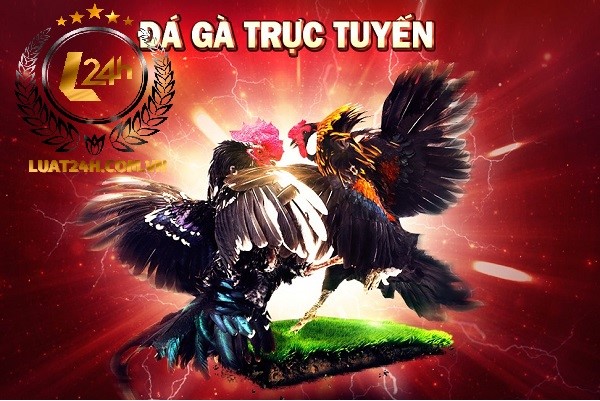For enthusiasts of traditional sports and cultural activities, đá gà thomo is an experience like no other. Originating from the rich cultural heritage of Southeast Asia, particularly Vietnam, đá gà thomo—or cockfighting—has remained a popular pastime for many. This exciting sport brings together strategy, skill, and fierce competition, making it a thrilling experience for both participants and spectators alike. In this article, we’ll dive deep into the fascinating world of đá gà thomo, its history, the rules, and why it continues to captivate audiences around the globe.
What is Đá Gà Thomo?
Đá gà thomo refers to a traditional Vietnamese cockfighting sport, where two roosters are pitted against each other in a battle of strength and agility. The name “thomo” comes from the platform where the fight usually takes place, providing a raised stage that adds to the intensity and spectacle. This sport has been practiced for centuries in Vietnam and has deep cultural roots in the region, often being associated with celebration, festivals, and traditional practices.
The competition itself involves the two roosters fighting in a controlled environment, often to the point of one of the birds being incapacitated or forced to yield. However, modern versions of đá gà thomo emphasize the skill and strategy involved, with various techniques being employed by trainers to enhance the birds’ strength, agility, and mental sharpness.
The History and Cultural Significance of Đá Gà Thomo
Đá gà thomo has been an integral part of Vietnamese culture for generations. Historically, cockfighting was not only a form of entertainment but also a way to celebrate important events such as harvests, weddings, and other festivals. It is deeply intertwined with the local customs and traditions of many communities, where it is seen as a test of the roosters’ endurance and the trainer’s ability to predict and shape the behavior of their birds.
In addition to its cultural roots, đá gà thomo has also been considered a symbol of masculinity and bravery in some regions, with spectators often betting on the outcome of the fights. Over the years, it has evolved into a form of organized competition with specific rules and regulations to ensure fairness and minimize harm to the birds. Today, it remains a popular event in many parts of Southeast Asia, with both traditional and modern takes on the sport being enjoyed by millions.
The Rules of Đá Gà Thomo
While the basic premise of đá gà thomo remains the same—two roosters fighting until one is defeated—the rules have evolved to ensure safety and fair play. Competitions are typically held in a circular or rectangular ring, where the roosters are carefully controlled to ensure their safety and well-being during the fight.

The main objective of the sport is for one rooster to incapacitate the other, either by forcing it to the ground or by making it unable to continue fighting. The fights are closely watched by referees who determine whether a bird has been defeated based on its behavior and the severity of any injuries sustained.
One of the key factors in đá gà thomo is the role of the trainer, who spends weeks, or even months, conditioning the rooster for battle. Trainers often use various methods to enhance the bird’s strength and endurance, from special diets to physical exercises. This strategic preparation plays a large role in determining the outcome of the fight, making it not just a test of the birds’ natural abilities but also the trainer’s skill and experience.
For those looking to experience đá gà thomo firsthand or simply to learn more about it, Đá Gà Thomo, where you can find more information and get connected with communities that celebrate this traditional sport.
Why is Đá Gà Thomo Still Popular Today?
Despite its controversial nature in some parts of the world, đá gà thomo continues to be a beloved sport in Vietnam and other parts of Southeast Asia. The reasons for its enduring popularity are multifaceted.
Firstly, đá gà thomo offers a sense of tradition and community. It is an activity that brings people together, whether it’s to witness an intense battle between two roosters or to socialize with fellow spectators. The thrill of the fight, combined with the cultural significance, creates an experience that is hard to replicate.
Secondly, there is a deep-rooted love for the sport among those who train and compete. Many individuals see it as a way to showcase their expertise in bird training and to prove the strength of their birds. Additionally, betting plays a significant role in the sport, with many people enjoying the added excitement of predicting the outcome of a fight.
Lastly, modern technology has made it easier for people to engage with đá gà thomo. Online platforms and streaming services allow people from all over the world to watch and enjoy these events, bringing new generations into the fold. Whether it’s watching live competitions or following the latest trends and updates, đá gà thomo has become more accessible than ever.
Conclusion
Đá gà thomo is not just a sport; it’s a cultural tradition that continues to captivate people across Southeast Asia. With its deep history, exciting gameplay, and sense of community, it’s easy to see why this ancient tradition has stood the test of time. Whether you are a spectator, a participant, or simply someone curious about this unique sport, đá gà thomo offers an experience that is both thrilling and steeped in rich cultural heritage.
